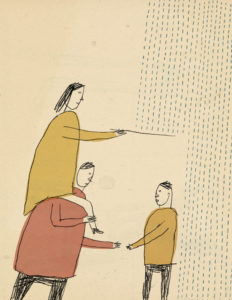Stanford Community Law Clinic
The Stanford Community Law Clinic is four miles from Stanford’s campus—just a short drive down Palo Alto’s University Avenue into neighboring East Palo Alto. But the distance seems much greater.

At the clinic office law students provide legal counsel and advocacy for low-income residents of East Palo Alto (EPA) and surrounding communities. Students spend a full quarter (sometimes more) handling wage-and-hour, Social Security, and housing cases, as well as criminal record expungements. They learn skills essential to just about any area of legal practice while also learning to think critically about the role of lawyers and lawyering in solving the problems of America’s poor.
“Stanford can sometimes feel like a bubble. This clinic is a good way to get out of the bubble and help a nearby community,” says Jennifer Holmes, JD ’12, who worked full time in the clinic for one quarter and then again in the part-time advanced clinic. After graduation, she’ll work for a D.C. law firm and then clerk for a federal judge in New York.
“What students learn at the CLC goes far beyond the nuts and bolts of procedure and brief writing. They’re honing advocacy skills and grappling with legal dilemmas in the real world,” says Stanford Professor of Law Juliet M. Brodie, who directs the clinic.
“Learning the law on the books is one thing, but we want our students to understand how things play out in real life and to feel the weight of responsibility for a real client on their own shoulders,” says Brodie. “How are you going to explain the pros and cons to a client in a wage-and-hour case? How are you going to answer a client who asks ‘What would you do?’ ”
The clinic was founded in the mid-1980s by law students as a way to provide legal services to residents of EPA. It merged into Stanford Law School’s clinical program in 2004 and is now one of 10 clinics that make up the Mills Legal Clinic, a core part of the curriculum that emphasizes experiential learning alongside service. Cases are carefully chosen to enable students to engage in a wide range of conventional lawyering activities (interviewing, counseling, negotiation, fact investigation, legal research, writing, presenting to a judge, and more) while also working on the very pressing problems of Stanford’s low-income neighbors. Under the guidance of Brodie and the other lawyers at the clinic, students are responsible for their cases from intake through disposition, whether reached through negotiation or through adversarial proceedings at an administrative agency or in court. Students also have the chance to participate in outreach or policy-level projects, such as representing a client in a legislative initiative or doing community education workshops at nearby sites.
Students learn practical lessons, which can be multi- layered. Katharine McFarland, JD ’12, says the clinic experience showed her “both the power and the limitations of the law in our clients’ lives.” This spring, she represented a restaurant worker who took home just $1,000 a month despite working 11-hour days 6 days each week. McFarland calculated that her client was owed more than $11,000 for about a year’s worth of unpaid work and various legal penalties. But, after filing a formal wage claim, the client settled for roughly half that amount.
“It’s a balance between wanting to get the full amount that our clients deserve under the law and wanting to make sure that our aims align with reality,” says McFarland. She might have won a judgment for the full amount, but it would likely have been impossible to enforce. “I’ve come to believe that less money now is better than more money never.”
McFarland is one of about three dozen students who rotate through the clinic each year, working from 9 to 5 (or beyond). As is the case for all of Stanford’s clinics, the course is a full-time quarter commitment, which allows students to focus on their cases without the distraction of other classes. With so much face-to-face time with students, Brodie and her colleagues are able to provide a high level of instruction and supervision.
Just a few weeks into the clinic, the students’ self-confidence blossoms as they learn how to advocate with poise. For Carl Owens, JD ’12, clinic experience confirmed his decision to pursue a career in litigation. “I spent a lot of time negotiating with opposing counsel in a housing case,” says Owens. “You do get put in the driver’s seat. It’s a new level of responsibility.” After graduation, he’ll clerk for a federal judge in Mississippi.
Brodie doesn’t expect the clinic to inspire all participants to make a full-time career of legal services or public interest law. Nevertheless, she hopes that their clinic stint motivates them to take on pro bono work at their law firms or do volunteer work for low-income clients—a hope that experience to date seems to fully justify.
McFarland, who will join the legal staff of the Children’s Defense Fund after graduation, says the clinic helped her reconnect with why she went to law school in the first place. “So much of law school is self-centered and self-focused, but at the clinic I got to really immerse myself in service to others,” she says. “The irony is that in losing yourself in service to others, you find yourself.” SL
Read SLS Clinic updates on the Mills Legal Clinic Blog.
June D. Bell is a Bay Area-based legal affairs writer whose work appears in The National Law Journal, Venture Capital Journal, California Lawyer, and other publications.